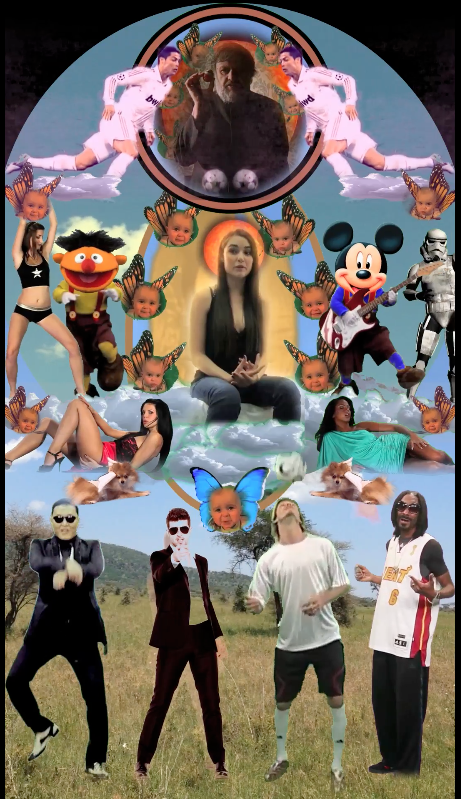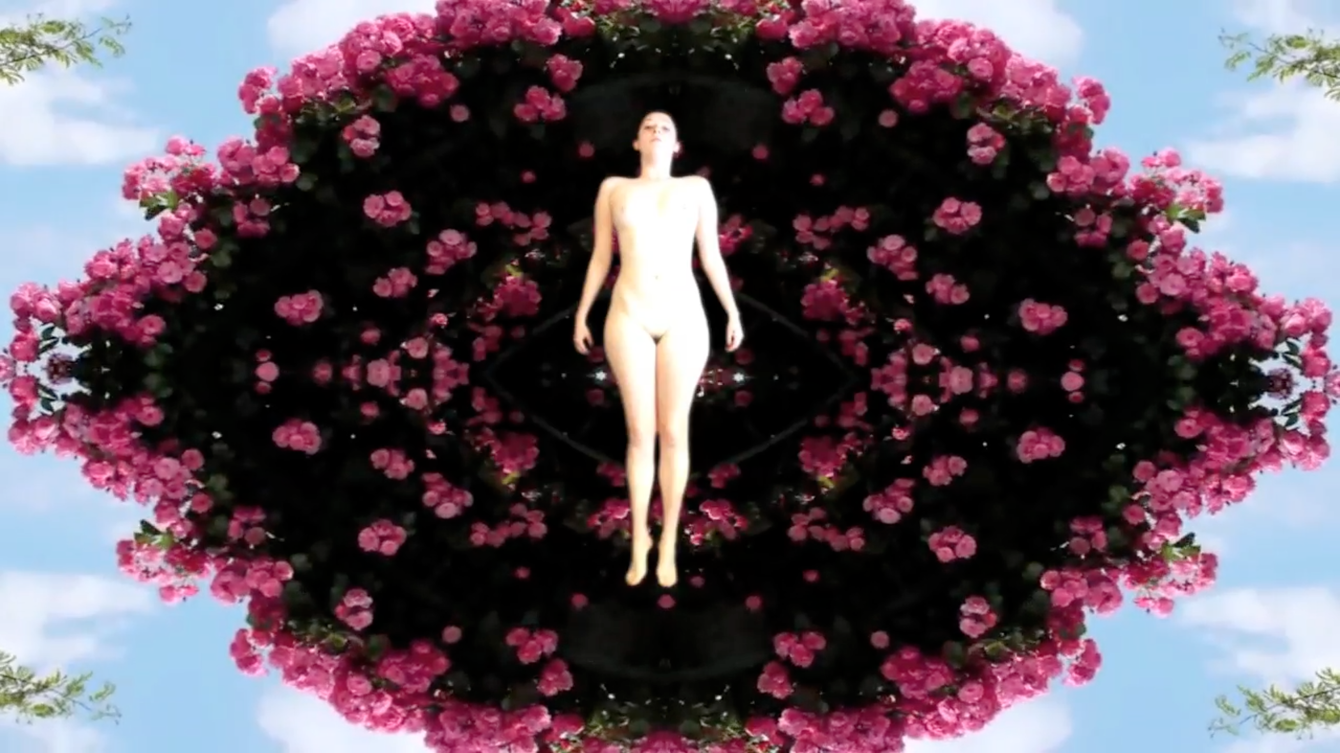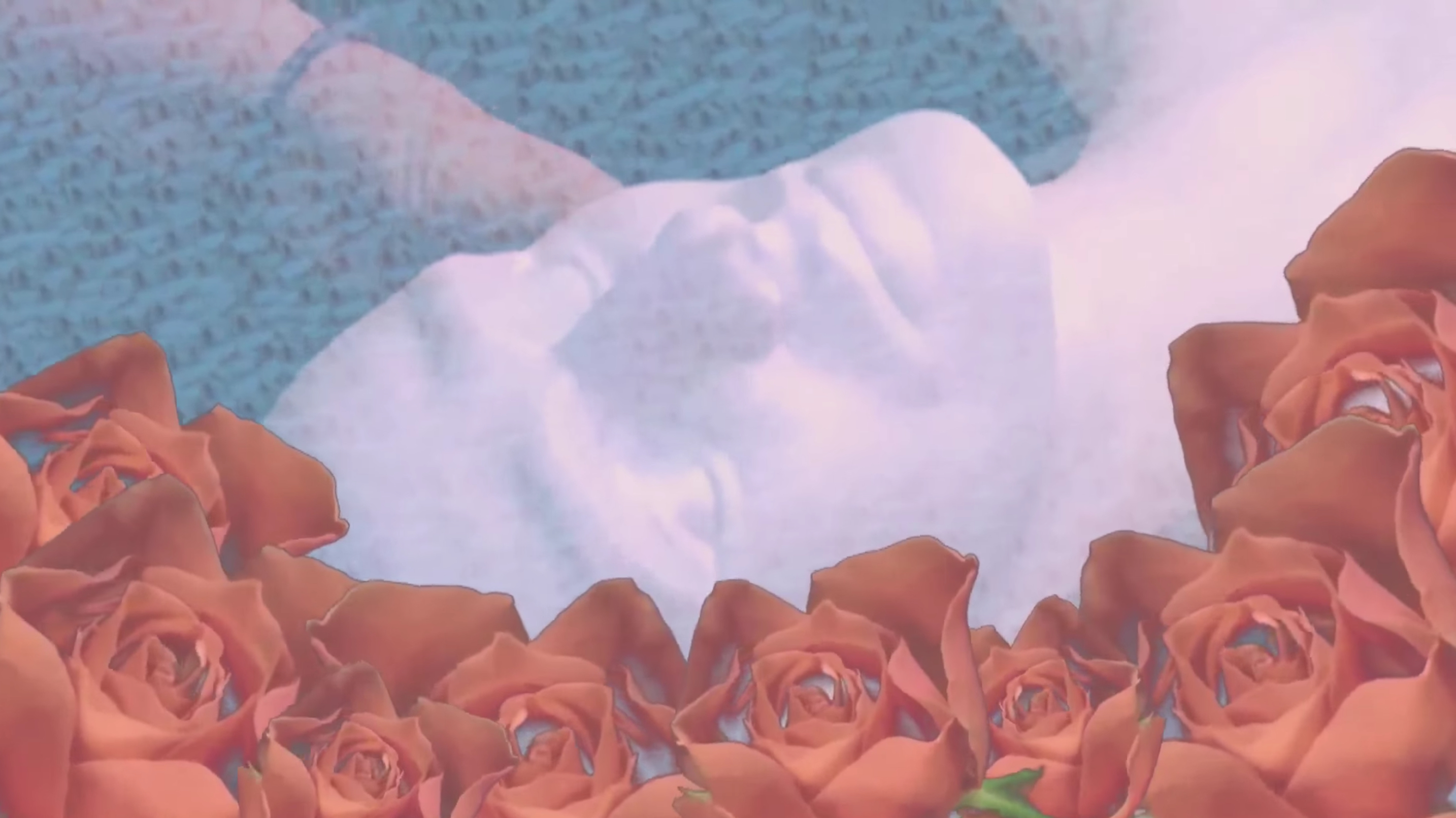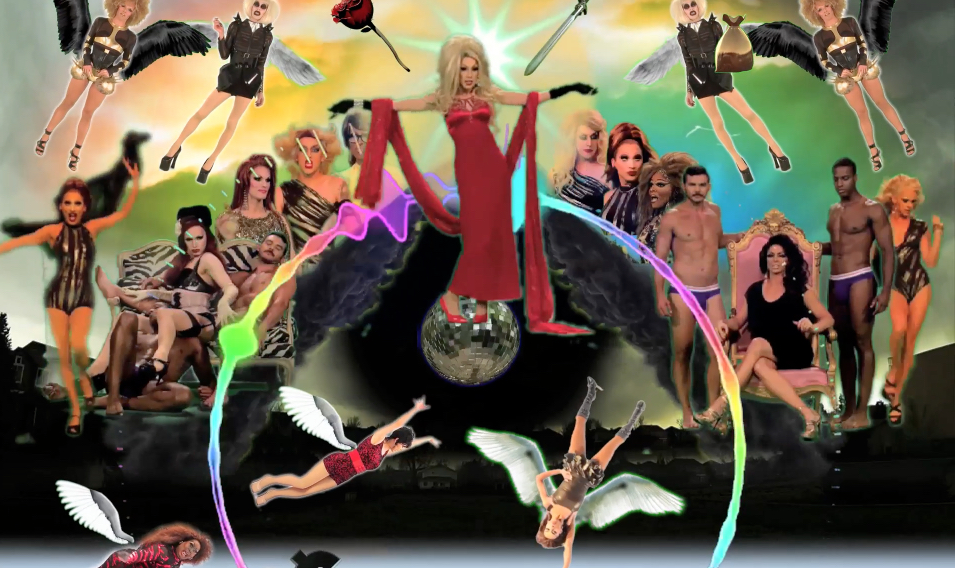Artist Profile: Xanthe Dobbie
By Katie Winten
Melbourne artist Xanthe Dobbie works with sourced footage, found images, emojis, religious iconography and a myriad of pop culture references to explore the bizarre juxtaposition of URL vs. IRL. We caught up with Xanthe to chat about the internet and identity politics, the commodification of feminism and queer culture, being in a creative relationship, and the art world’s disdain for poo emojis and flying dildos.
Your work explores (among other things) identity in the internet era, which is rapidly changing and evolving. How do you see online identity in relation to LGBTQI+ culture?
The Internet provides a crucial potential for safe spaces, which still don’t really exist IRL. In the last few years, conversations around feminism, gender, trans politics and general inclusivity have expanded exponentially. It’s not like we’re making huge dints in the steadfast beliefs of the ignorant masses, but damn, can we make a comments section entertaining (and educational). Trolls will be trolls, but the internet allows us to feel confident in our views as it feels like a place without that much real world consequence, which is, of course, less and less true as we carry on expanding and entrenching ourselves within online existence. I think we’re heading towards (or perhaps are already within) a time where our idea of an authentic self encompasses both online and offline experience – they’re just so intrinsically linked. Social media and queer specific sites like autostraddle have certainly done wonders for visibility, which, like everything on the Internet, has positive and negative ramifications. On one hand you’ve got wider understanding, awareness and community and on the other you’ve got a spot-lit platform for bigotry and hate speech to thrive, not to mention the appropriation of queer culture by the mainstream, but that’s a much wider issue. The transformative and ever expanding nature of online space is what makes it such an engaging landscape – it’s so weird and niche, it’s for everybody, but it’s also an exclusive club, it’s universal in jokes and, of course, it’s loads and loads of porn.

I’m interested in the space you create in your work, both academically and visually. You imbue animated paintings with art history references alongside pop culture, emojis, and religious iconography. How do you achieve accessibility in your work, whilst still communicating a complex conceptual rationale? Does your work ever get lost on certain audiences, and does that matter to you?
Accessibility is certainly of concern to me. I think my works are pretty easy to understand if you spend a little bit of time with them. Working with pop culture, YouTube, memes, gifs, emojis, celebs etc. and smashing them together with easily identifiable religious and historical imagery hopefully makes for a fun and relatively accessible viewing experience. It’s low and high brow culture colliding. I suppose you can read the works on a number of levels. At its most basic, they’re about new ideas of worship in the Internet era or about recognizing stuff you like in an aesthetically pleasing formation, then there’s queer and feminist identities and co-opting of queer culture, then there’s the whole question of authenticity and self and globalization and capitalism and online subcultures and enough art wank to fill a very camp pool.
I’m also interested in pushing my practice to make it more accessible. Next Wave Festival, where I exhibited my collaborative project One Million Views earlier this year, has a massive push for accessibility – tactile and audio tours, interpreters, relaxed performances etc. For our project, my collaborator Tiyan and I developed an all-encompassing audio tour for vision impaired people which talked them through all 12 works and gave directions between all 6 venues included in the show. We also closed captioned all our online video content. It’s such an interesting skill to begin to acquire and it’s an absolutely essential step for the art world.
Funnily, I think the main space where my work has the potential to get lost on people is within the art world. There is still such a massive push for hyper-conceptual or minimalistic process-based works and my style of work can occasionally be dismissed as too trivial or too trashy or too funny as it so actively engages with internet culture. It’s not as if my work isn’t heavily entrenched in theory or doesn’t take months to make, some “art for artists” types just find it a little difficult to get past poo emojis and flying dildos.

We’ve touched on identity politics and online spaces, but I’m also interested in the trajectory of feminism in correlation with the rise of the internet. How do you view feminism in our current society? Do you think feminism has a tendency to be commodified?
Feminism still has a very long way to go in current society – we’re just so far from any kind of equality. The Internet has certainly pushed western feminism in the direction of intersectionality in recent years, which is so important – what good is feminism if it’s not for trans women or people of colour? That being said, call out culture is in a weird spot at the moment, we haven’t really developed any kind of foolproof etiquette – there seems to be a lot of keyboard warriors on moral high horses intent on smiting the ignorant for not being educated. We’ve all said and done awful things I’m sure. But as a privileged cis white person that went to university, I did a whole lot of learning and I now know about language and pronouns and 3rd wave feminism, which shouldn’t be taken for granted. Calling out shit is obviously essential, but a lot of the time, being respectful of people and pointing out the fundamental flaw in their approach is more helpful. If they don’t respond to that, then I’d say it’s a green light to unleash the inner fury of relentless patriarchal oppression. So much of me wants to be like “fuck you, it’s not my job to educate you”, but feminism gets a lot of (unwarranted) hatred from mainstream media and “nice guys” (MRAs), so perhaps we should at least give people the chance at education before we shut them down completely and swear them off the possibility of ever becoming an ally.

Feminism and queer culture absolutely have tendencies to be commodified – we’re really great and naturally people want to steal from us (though it’s not as if there isn’t a veritable boon of appropriated baggage engrained within queer culture and drag culture). There does seem to be something innately “hip” about being queer and being a feminist ATM – certainly in Melbourne. While I do cringe about it a lot and it saddens me that we have to package up a political identity and turn it into a salable item to get the word out, I also don’t think it’s necessarily all bad if it does legitimately get people talking about gender and sexuality and breaking down taboo. Isn’t it kind of great that because of this popularization of queerness, more celebrities have been coming out, gaining amazing babes like Ellen Page, Kristen Stuart, and Aubrey Plaza who perhaps wouldn’t have in a different sociopolitical landscape (though that is wild fan-based speculation on my behalf) and that because of this, more young people will feel more comfortable in their own sexuality. The real problem is in cultural appropriation, when people are just taking stuff and trying it on for a hot second without acknowledging its loaded history or having to deal with the real world consequences of actually living that history.

Your 2013 video work ‘The Space Between’ is what sparked these questions for me – you reference the tropes of femininity whilst simultaneously showing the words ‘slut’, ‘bitch’ and ‘cunt’, which speaks to me of the binaries associated with societal pressures placed on gender. Can you tell me a bit more about that work?
You’re definitely on the money with that work being about deconstructing the trope of “woman” and pushing the boundaries of static binary gender structures. I made it when I was still in Honours at RMIT, which was a few years ago – perhaps it would be a little different if I were to make it now as my politics have evolved, but I think the basis of the work still holds up. Some of the words are docile, others powerful or violent, others are there to be reclaimed – the whole idea of slut walk was very new to me at the time. I wrote the words down in a kind of stream of consciousness- just listed off the first words that came to my head when I thought of women and gender and bodies. On the flip side, you’ve got my infantilised body rolling around on a bed of digitized flowers – this, like my more recent works, is about positioning the body against art history. In a way it’s a classic Botticellian nude, but the longer you watch it, the more unsettling and awkward and distinctly unsexy it becomes – subverting the gaze etc. etc. I filmed that work by taping my iPhone to the ceiling of my shitty student apartment.

I went down a pretty deep google hole researching your practice for this article, and stumbled across ‘Elizabeth Mitchell and Xanthe Dobbie’ wedding details on theknot.com from June 2016, which makes sense from previous conversations I’ve had with you when you’ve referred to your partner Liz as your wife! Did you have a wedding ceremony?
Lol, “theknot.com” – that one’s definitely on Liz, she went down a pretty deep hole when we were attempting to figure out if we wanted a registry – we did not, it turns out. Yes! We have, in fact, been married twice this year. We headed over to Auckland for the legal proceedings in February. It was just the two of us in a Births, Deaths, and Marriages office with two random witnesses we found in the waiting room – they were lovely. Our families really desperately wanted to come but we made them hold off for the “real” (though legally void) ceremony in Melbourne, which we had at a bowls club in June. Our friend Harley made our outfits, we got a taco truck, we had three of our friends’ bands play (Great Outdoors, Ocean Party, and Geoffrey O’Connor) and Liz surprised me by getting our friend Caroline from Deadstar to sing their 90s hit “Deeper Water” as we walked into the venue. It was all very very special and also pretty stressful as we self-decorated and catered the whole thing and did the bulk of the organising in the 3 weeks prior.
Neither of us particularly believe in the institution of marriage and our vows were very much about respecting each other’s bodies and independence, we just felt it was a particularly important time in queer history to be taking a stand, especially with this legit ridiculous plebiscite on the horizon.

The previous question leads into this one, which has absolutely nothing to do with your artistic practice but stems from my intense fangirling for you and your partner Liz, who’s in the band Totally Mild. You’ve done some video clips for Totally Mild – do you and Liz work well together as a collaborative team? Or are there times when you drive each other nuts?
Liz and I actually started dating after we had a “meeting” about me making their debut video Christa – it took a really long time to make because we were busy falling in love. I’ve done quite a bit of visual stuff for them since then and will probably be returning as their covergirl for their second album (which is perfect and amazing and lots of the songs are about me haha). I’ll be making another video for the next album also, though we haven’t decided on a song yet. Despite our egos (which are very pronounced), Liz and I make really great collaborators – we’re happy to take criticism from each other in a way that we perhaps wouldn’t tolerate from other people. I find collaboration with other artists really challenging, as sometimes you’re just not on the same page for whatever reason. I think Liz and I find it easy to understand each other’s perspectives. It’s not as if we don’t fight, that would be absurd and unhealthy, but we have a lot of mutual pride and respect for our creative practices.
Xanthe’s video works are currently showing as part of the John Fries award at UNSW Galleries in Paddington until October 1st, 2016.

